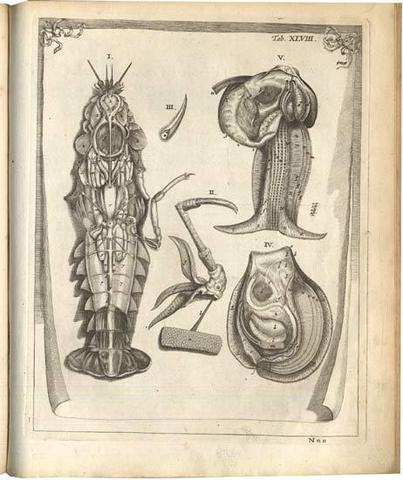Lorem ipsum dolor sit amet, consectetur adipiscing elit. Integer vel eros volutpat, consequat diam ac, eleifend dolor. Mauris risus ante, tempus in interdum elementum, consectetur id odio. Praesent lorem dolor, sollicitudin sed metus at, laoreet vestibulum dolor.
BLAES, Gérard [BLASIUS] (ca. 1626–1692)
Anatome animalium, terrestrium variorum, volatilium, aquatailium, serpentum, insectorum, ovorumque, structuram naturalem ex veterum, recentiorum, propriisque observationibus proponens, figuris variis illustrata.
Amstelodami [Amsterdam], sumptibus Viduae Joannis à Someren, Henrici & Viduae Theodori Boom, 1681.
-
More info

-
More info

-
More info

-
More info

-
More info

-
More info

-
More info

-
More info

-
More info

-
More info

-
More info

-
More info

Related items
-

KAMMERER, Paul (1880–1926)
Vererbung erzwungener Fortpflanzungsanpassungen. I-II: Die Nachkommen der spätgeborenen Salamandra maculosa und der frühgeborenen Salamandra actra (1907); Vererbung erzwungener ...
-

LYSENKO, Trofim Denisovich (1898–1976)
Die Lage in der biologischen Wissenschaft. Tagung der Lenin-Akademie der landwirtschaftlichen Wissenschaften der UdSSR (31. Juli – 7. August 1948). Stenographischer Bericht.
Mo... -

BATESON, William (1861–1926)
Mendel’s Principles of Heredity.
Cambridge, University Press, 1909. -

SPALLANZANI, Lazzaro (1729–1799)
Opuscoli de fisica animale, e vegetabile. Volume Primo - Secondo.
Modena, presso la Societá Tipografica, 1776.
The first comprehensive manual of comparative anatomy based on the original and literary researches of a working anatomist. The book, which is illustrated with over 800 engraved figures on 65 plates, is largely a compendium of previous writers on the subject, but does include Blaes’s own investigations. He is particularly interested in embryology and deals with the foetal membranes and development of ruminants, rabbit, cat, horse, and the chick. The illustrated monograph on the chick is a very careful and thorough piece of of compilation, and may be recommended as a competent exposition of contemporary embryology. Blaes was the first to link the production of voice in birds with the lower larynx, and he anticipated Cowper in finding Cowper’s glands, which he illustrated in his plate of the genitalia and os penis of the rat. The 85 pages devoted to the anatomy of the dog was the first comprehensive and original treatise on a vertebrate since Ruini’s monoghraph of the horse (Bologna 1598). It was Blaes who attacked Steno in the dispute as to which of them had been responsible for the discovery of the duct of the parotid gland. Blaes dismissed his 23-year-old victim as a wretched boy, and accused him of deceit, ingratitude, bad manners, injustice, blundering, foolishness, perfidy, incivility, unveracity, treachery, calumny, scoffing, malice, arrogance, perversity, audacity, shamelessness, impudence, fatuity and depravity. That was probably all the demeaning insults he could think of ...
Collation: Pp (8) incl. the additional engraved title, 494, (2). Text in double columns. With 5 engraved unnumbered plates and 60 full-page engravings in the pagination, numbered I-LX.
Binding: Laced-case parchment binding, green endbands, no binding title. Fine copy.
Provenance: A couple of purchase prices are mentioned. Carolinska medico-surgical Institute acquired the volume in 1827.
References: Garrison-Morton 296; Cole, History of Comparative Anatomy, pp 150-155; Norman 241; Singer, History of Biology pp.208-9; Wood, Literature of Vertebrate Zoology, p.243. Thornton, Scientific Books, pp.128-9.